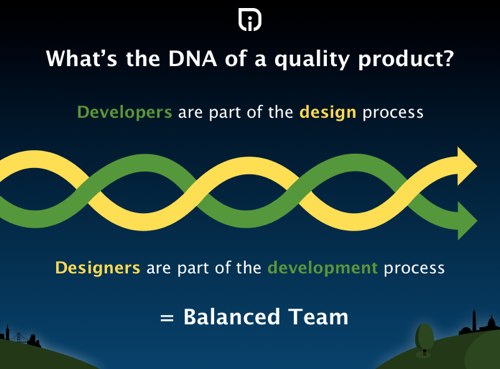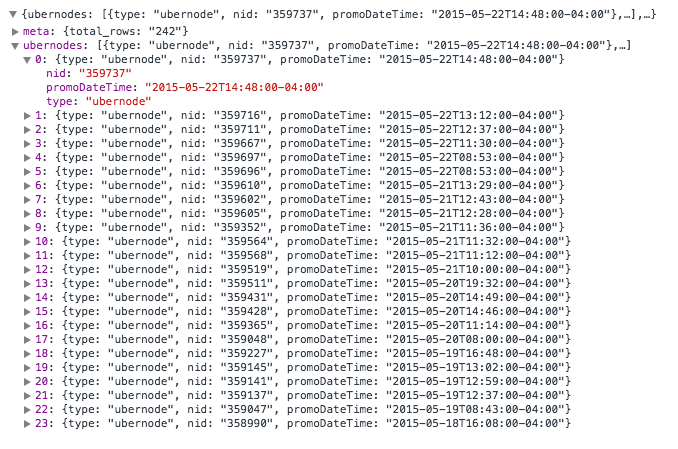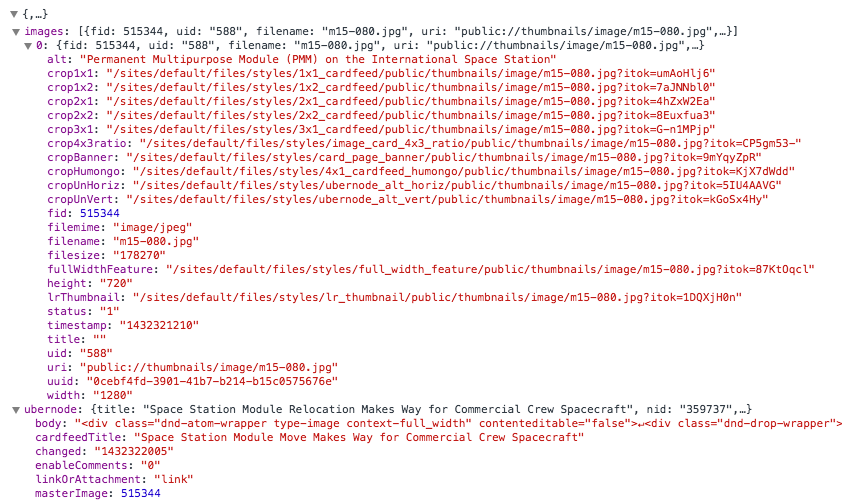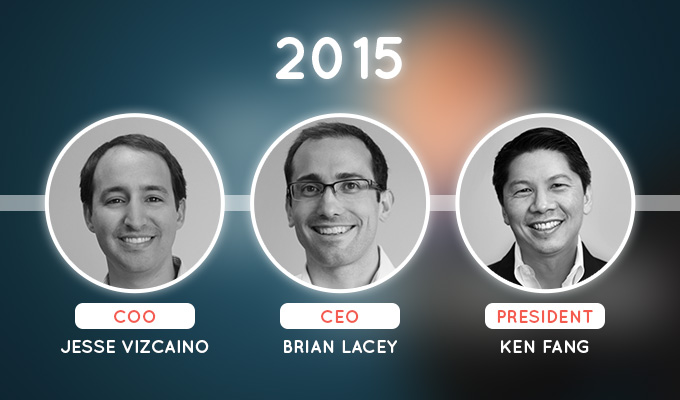Last week we sponsored MoDevUX, a mobile conference in Washington, D.C. led by vanguards in the mobile development and design industry. In addition to learning about emerging trends from the diverse crowd of presenters and attendees we also shared a bit of our own "secret sauce".
Anthony Nystrom, our Director of Mobile and Emerging Technologies, shared the stage with Jurgen Altziebler, our Managing Director of UX to tackle the topic of "Development and Design: When the Two Must Act As One".
Through cultivating a culture of quality in both design and development we've gained insights on the formula for success among teams of developers and designers. MoDevUX was an opportunity for us to share those insights with the greater mobile design and development communities.
Designoper, Developer or Designer, the point is that recognizing each other's skills while sharpening your select personal skills is what a team is built upon. Certainly there are stars, however stars don't scale but teams most certainly do! And like any business that is looking to grow, it must rely upon teams that are less interested in their personal prowess and more interested in their unified presence.
Great Products: Under the Hood
If you're building a product you already know that it's important to know your industry, understand your users, define a clear vision and path of execution, and to be bold in your approach. But what role does your team of developers and designers play in the overall viability of your product?
We believe the DNA of any mobile or web product is embedded in the team(s) that are executing on the vision. Ultimately, every product is really just someone's good idea made accessible by teams of programmers and designers. Therefore, the most important factor in the success of your product is the team of experts building it. At Intridea we've been honing the process of creating these teams for years, and with great success! We do it in large part by making sure our teams of developers and designers are working together, not autonomously.
Building a Design & Development Team
Often, design teams work in isolation from development teams and in many cases design is outsourced to other agencies while development is done in-house or vice versa. But there's no doubt about it, a great product experience is the direct result of a good working relationship between the teams building the functionality (the developers) and the teams creating the aesthetic experience on top of that core functionality (the designers).

Of course, simply knowing that designers and developers should work hand-in-hand doesn't mean it's going to be easy. After all, designers and developers are different breeds and both groups work in distinctly mysterious ways. The trick to building solidarity in a product team is to hire the right kind of people in the first place.
While you might be inclined to seek out "rockstars" for your team, keep in mind that superheroes get bored easily, they're hard to find, and they don't scale. We have found that it's more advantageous to focus on hiring specialists who meet these requirements:
- Have the skills (and attention span) to see a project all the way through (even that last 10%)
- Are great at a couple of core things but are eager to learn beyond the bounds of their specialty (i.e., beware of "backend" developers who refuse to do "frontend" work)
- Leave evangelism to theocrats: you want people who aren't afraid to use different technologies (whether they're cutting-edge technologies or older technologies that just happen to be the right tool for the job). Find people who love the challenge of creating something incredible regardless of the tools and processes used to get there.
- Value form as much as function. It's important to see the inherent value in both a well-architected application and an easy-to-use, beautiful user interface.
In a symbiotic designer/developer relationship, both sides will, at some point, be faced with setting aside ingrained methodologies in order to collaborate effectively. What's actually happening in those cases is something like this: designers are learning something new about practice patterns in development, and developers are learning something new about user flow and experience from designers. When designers and developers work together in such a way, both teams gain something and will be more agile, productive and innovative on future projects.
Setting the Team Up For Success
Managing a product team is generally no easy task. Ask the design team to work in collusion with the programmers and it's sure to get even more challenging. Jurgen shared his strategy for creating a "balanced" team and setting them up for success on any project.
- Team Building: This is an important first step. Assign an internal project (maybe a redesign of your company's website) to a developer and a designer. In this situation they will have to manage the project together, understand how the other one works, communicate in-depth about scope, features, and blockers on the project, and deliver a finished product.
- Field Testing: Once you've ensured that the designer and developer can work together, pair them on a mid-sized client project. This adds a bit of necessary pressure because client deadlines are often more strenuous than internal deadlines. Additionally, a client project will introduce more variables for both sides. They'll have to think about things like client expectations, changes in scope and direction for both UI and architecture, and more.
- Heavy Lifting: Now your designer and developer are battle-hardened and ready to lead the troops. Appoint this dev/design duo as the lead for larger projects that have multiple designers and developers. Their experience will aid them in helping other designers and developers work together, maximizing the results of the process.
But I Just Want A Good Product That Will Be Profitable
You have an idea. You need a product built. It sounds easy enough. Do you really need to spend all this time thoughtfully building the team behind the product?
In short, yes. Great products fail all the time; and not because there wasn't a good idea behind it. They fail because the teams building the products couldn't meet at that magic place - the precipice of awesome. (No, really - amazing things happen when designers and developers work together closely!)
Keep in mind, there isn't a lot of room for failure, especially in the mobile app market where users are educated and discerning and the competition is cutthroat. It's not even that users are "demanding" sexy interfaces and well-built applications - we're beyond that. Today, users just expect it. And if your product doesn't meet expectations your users won't even complain about it - they'll simply move on to another application that does it better.

These are problems that you rarely see when you have a team of designers and developers working closely on a product because simple issues like awkward user flow, unintended behavior within the interface, and architecture miscalculations are caught more frequently and earlier on in the process.
The Secret is in the Sauce
So there you have it - a sampling of our "secret sauce". TLDR: Hire smart people who value quality and aren't afraid to cross the "party lines".
Be sure to go through the complete slide deck from our presentation at MoDevUX, and check out our portfolio where you'll get to see some great examples of recent products and solutions built by our teams of designers and developers! Additionally, the full set of photos from the event is available on our Flickr page.
Do you have insights on helping designers and developers work together on projects? We'd love to hear it. Did you see our presentation at MoDevUX? We want to know what you thought. Leave your feedback below or reach out to us on Twitter.






